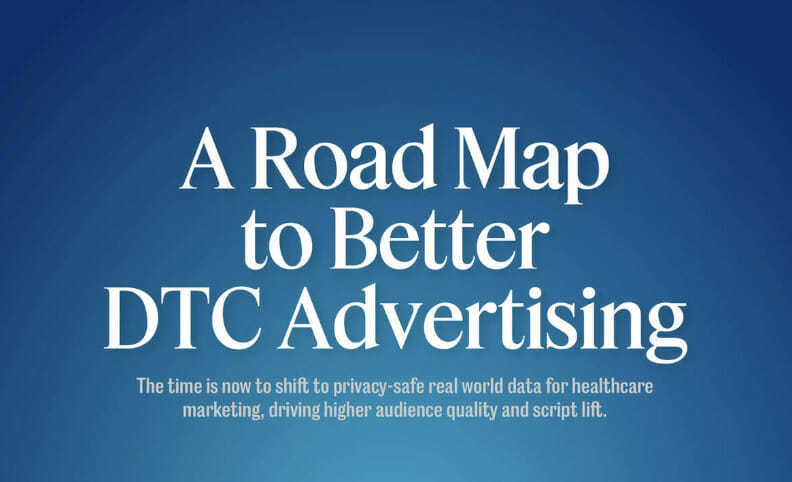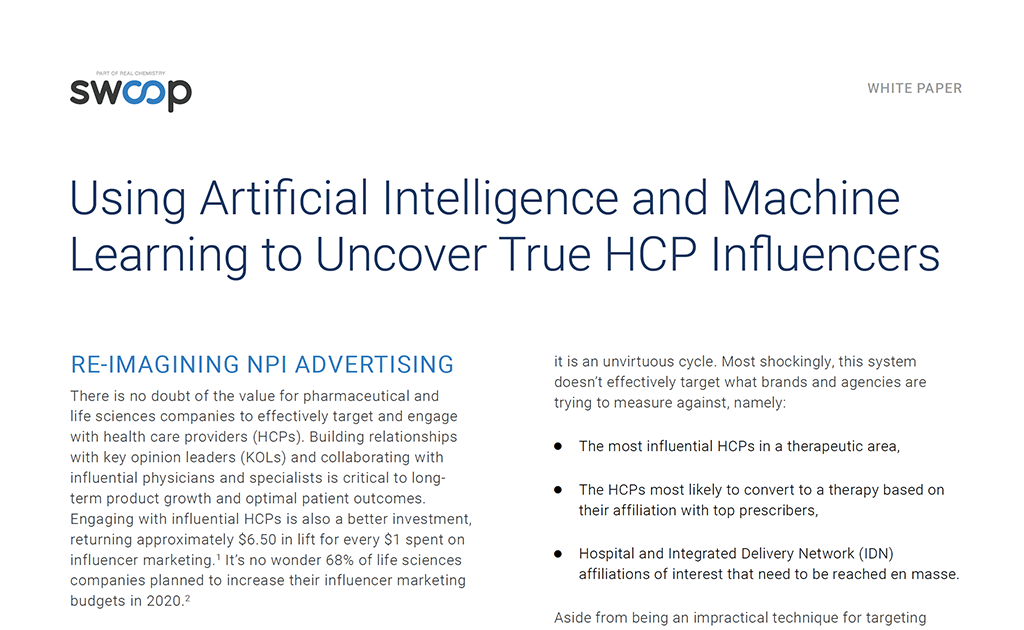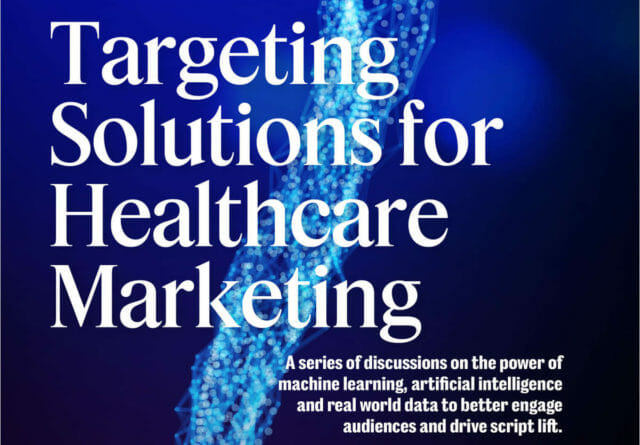Pharma marketers are adapting to a variety of changes that have impacted targeting and privacy. Real world data-driven methods allow companies not only to have more effective conversations with patients but also take a more privacy-safe approach to reach the right consumers.
During an MM+M podcast, sponsored by Swoop, editor-at-large Marc Iskowitz sat down with Katie Carr, SVP of sales at Swoop, to discuss the privacy changes being made by the walled gardens and why strengthening targeting via a custom-built patient audience segment puts advertisers in a more favorable position as those shifts occur.
Carr kicked off the discussion by explaining that Swoop offers a number of different solutions for brand marketers today.
“We use real world data in conjunction with artificial intelligence and machine learning to create high audience quality segments that drive script lift,” she said. “What Swoop understands really well is that every brand is going to have its own unique challenges and therapeutic advantages.” Which is why “segments are customized based on the specific needs of the brand” and “the company is trusted by the top 42 out of 50 pharmaceutical manufacturers and top 18 out of 20 pharmaceutical agencies.”
The impact of walled gardens
“There have been a lot of changes from a privacy standpoint at Apple, Google and Facebook,” Carr explained. For example, the Apple iOS 14.5 update “prompted users to determine whether or not they wanted to be tracked” and “over 96% of users chose not to be tracked.”
Facebook’s interest group restrictions “meant that advertisers could no longer advertise to users who were part of, say, a World Diabetes Day” group, she said. In addition, Google recently announced an end to cross-app tracking in Android by 2024 and Topics, a privacy-friendly replacement for third-party cookies that is “too broad” for healthcare marketers.
As a result, marketers have “had to move their dollars pretty quickly,” Carr said, but “it’s making it really difficult to understand where to invest.” The key is “to start looking at solutions that no longer depend on the cookie” and to think about it “from a targeting perspective as well as from a measurement perspective.”
Finding privacy safe data
At Swoop, “privacy is first and foremost in everything that we do,” Carr said. The organization and its leadership have consistently advocated for “being able to market to a patient in order to ensure that they are knowledgeable about the disease state or the treatment that might be lifesaving” but also for ensuring “that there is privacy as well.” Which is why Swoop became the first consumer health data company to become a member of the Network Advertising Initiative (NAI), she said.
Carr noted the NAI has “a stringent review process that happens on an annual basis and ensures that anyone who is a member is within certain parameters when it comes to how they touch and use data.” For those seeking a data provider, she recommended asking if they are both HIPAA certified and a member of the NAI.
Additionally, Swoop utilizes a process called k-anonymity, a scientific way to guarantee patients cannot be re-identified, which limits Audience Quality (AQ) to 50%. Be aware that “if [data providers] are sending you a segment that’s over 50% audience quality, that’s a red flag,” Carr explained. “When you’re dealing with an indication such as diabetes, for example, those segments should not be created above 50% because you could potentially re-identify that patient.”
Without a thorough privacy review, “you’re putting your brand at risk,” she said. At Swoop, “we have a team that’s on top of all these [changes and we] can talk through what we’re hearing, what the solutions are and what we are anticipating.”
The new patient landscape
A lot has changed on the consumer side as well. For example, there has been “an extreme increase in the amount of patients using telehealth services” since the pandemic, Carr said. In addition, a lot of patients are “opting out of being tracked” and “the consumption of media is evolving” with more usage of both paid and ad-supported streaming services, as well as addressable TV.
The reality is it has “become more important to start leveraging real world data to find those patients who might not be active in the same places that they were in the past,” Carr explained. Partners such as Swoop use “real world data for planning, understanding where patients are engaging and targeting,” she said. Targeting with real world data “really boils down to the prevalence of the condition within a segment.” For example, “a 50% audience quality means that out of a segment of 2,000 IDs, 1,000 of those are diagnosed with the condition based on our data asset.”
In the end, audience quality helps “identify patients and reach them, engage and educate them in order to increase their quality of life,” Carr said. At the same time, it’s important to maintain “the privacy of the patient” and not “reach out to the wrong patients,” she added.
That’s precisely why Swoop “is a privacy-safe solution.” To ensure clients “feel comfortable before moving forward,” Swoop does not “charge any upfront fees” for creating “custom segments based on your specific brand,” she said. Her parting advice: “Don’t be intimidated if you don’t know everything about real world data” because there are “a lot of experts in the space from a privacy, pharmaceutical and data perspective to have those conversations with you.”
From the September 01, 2022 Issue of MM+M - Medical Marketing and Media









